A look at Windows 8 Tablets running on TI, Qualcomm, Nvidia, AMD and Intel silicon
by Brian Klug on September 14, 2011 9:00 PM ESTThis afternoon (and yesterday) we had a chance to meet with a number of SoC vendors who have partnered with Microsoft for Windows 8. Each of them has their own individual reference tablet running Windows 8, and today we had a chance to survey the landscape and get photos of all the tablets. We started with ARM, then looked at x86 based tablets. Of course, the real goal with Windows 8 is to abstract as much of the difference between these two platforms away.
Unfortunately, all of the ARM vendors were required to keep their tablets under glass and out of the way of physical contact per Microsoft instruction. Microsoft isn't ready to show off the ARM version of Windows 8 for a variety of reasons at this point (at least without a Microsoft rep. present), but we still got a chance to at least take a look at what there is now. Microsoft is encouraging tablet makers to target either a 10.1" or 11.6" form factor with 1366x768 resolution (ed: Metro will require 1024x768 as a minimum, so 1280x720 displays don't meet Microsoft's requirements).
Texas Instruments
First up is TI, whose development platform was demoed playing back the 1080p30 H.264 baseline video shown in the keynote fluidly in windows media player with a split-screen view. One tablet displayed the start menu, another displayed two split screen games. TI's development platform as shown right now is running on OMAP 4430, which again consists of two ARM Cortex A9s at 1.0 GHz and PowerVR SGX 540 graphics. Windows 8 won't launch on OMAP 4430, however, instead it'll launch on the more powerful OMAP 4470 platform with PowerVR SGX544 graphics and a 2D display compositor. The reason is partly due to SGX544 having full Direct3D 9.3 compliance, partly because it's an all around faster platform. I'm told that right now there's some Direct3D emulation going on as well for all the SoCs that don't support Direct3D 9.3.
I also recorded a short video showing the TI Windows 8 tablet in action.
Qualcomm
My next stop was Qualcomm, whose current development tablet runs on an MSM8660 SoC, which consists of two scorpion cores and Adreno 220 graphics. Qualcomm took the tablet out of the glass box for us and showed a quick demonstration of the start menu scrolling back and forth, and the IE10 mobile view working and scrolling around.
Unfortunately we weren't allowed to shoot video of the tablet while that demo was running, but we did grab some photos of the tablet without the glass box. Performance on the start menu looked to be above 30fps the whole time but not buttery smooth like the x86 tablets we've seen so far.
Just like TI, Qualcomm won't go to market with the SoC they're demonstrating Windows 8 working on today, instead they'll use the more powerful dual core Krait MSM8960 at first and quad core Krait APQ8064 later on. Dual core krait SoCs (eg 8960, 8270, 8260A) come with Adreno 225, quad core krait (APQ8064 and others) come with Adreno 320, both of which are Direct3D 9.3.
NVIDIA
We've seen NVIDIA's Kal-El quad-core A9 based tablet a few times now, and found it out on the floor, also behind glass. Unlike the other vendors, NVIDIA hasn't said anything about going to market for Windows 8 with anything but Kal-El, and I don't see any reason why they should either.
The Kal-El development tablet was seated in a nice looking dock with what looks like one USB 3.0 port and a full size HDMI port.
AMD
Switching over to the x86 camp, we have AMD, who showed us two tablets running on Brazos - the Acer Iconia Tab W500 and MSI WindPad 110W, which use a C-50 and Z-01 APU, respectively. Displays on these are 1280x800 and support capacitive touch just like you'd expect for Windows 8.
Both the MSI WindPad and Iconia Tab felt snappy and responsive running the same Windows 8 Developer Preview build that we've used on the Samsung developer hardware. Subjectively, the WindPad's capacitive panel was more responsive and less prone to errant touch recognition than the Iconia, though both were more than useable with Windows 8.
Intel
Last but not least is Intel's own development tablet, which is running an unnamed 32nm SoC. Intel was suspiciously silent about which particular SoC was inside this device, and you'll notice that it too is locked down in a plastic box, lumping it squarely in the next-gen SoC category for Microsoft.
It's possible this is Medfield, it's also possible this is some 2nd gen 32nm Atom SoC. Hopefully we'll find out more as Windows 8 starts getting closer to launch.


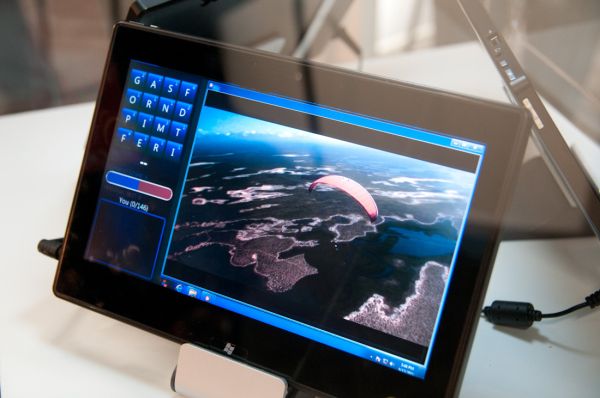
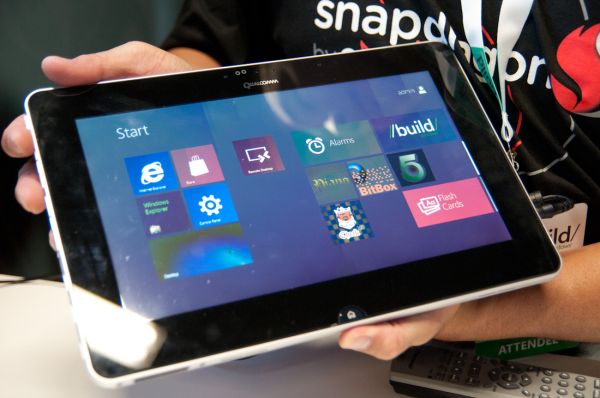
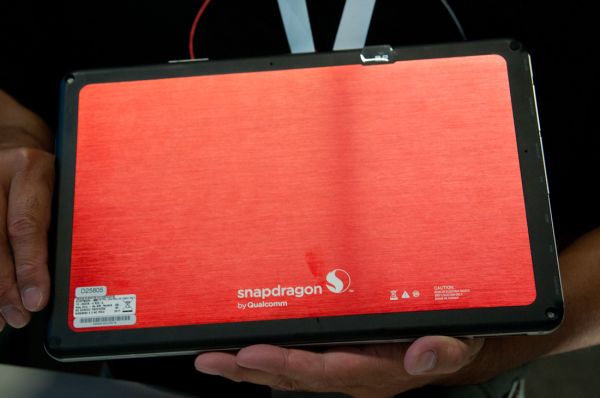
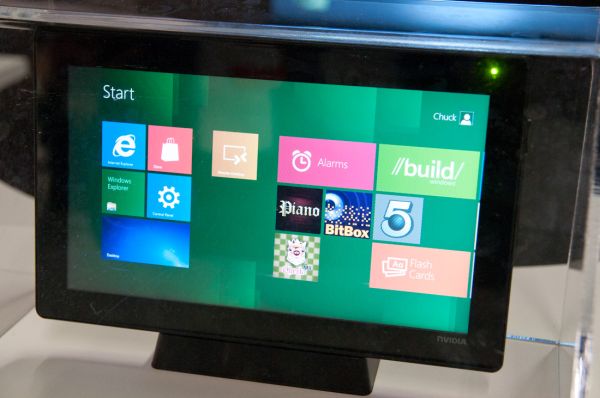
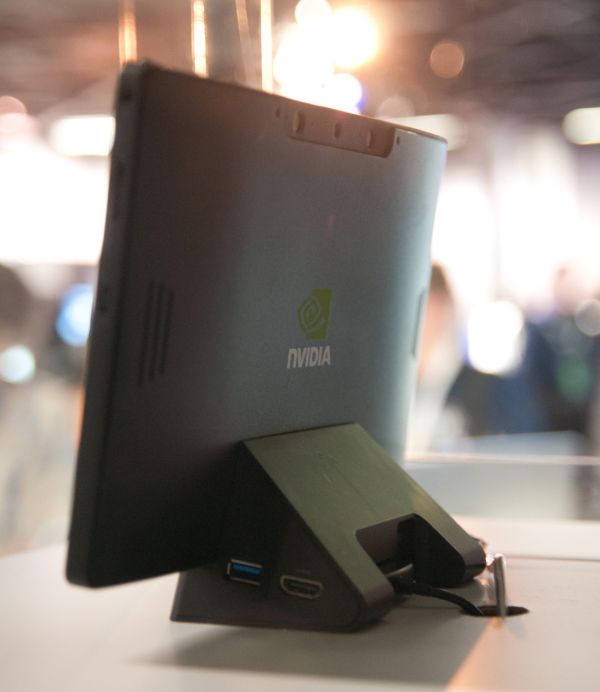
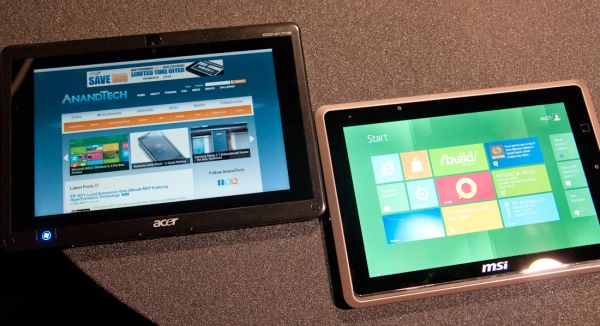
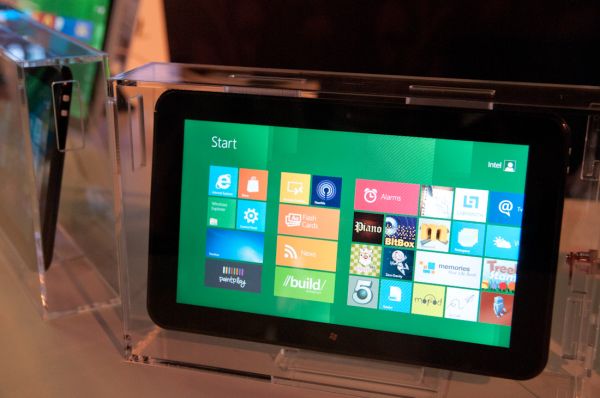














92 Comments
View All Comments
mados123 - Sunday, September 18, 2011 - link
Excellent summary of why Windows 8 makes sense for those looking for a more robust, fully functional tablet - especially considering the respective hardware and its performance will continually go up as the electronics get more miniaturized.rdamiani - Thursday, September 22, 2011 - link
Microsoft has been trying to sell tablets based on all those strengths for something like 20+ years, and the market has stayed away in droves. The first version was actually built on Windows 3.1 and was called Windows for Pen Computing (or something like that). It had handwriting recognition and an on-screen keyboard.If you want to see why the ability to run Quickbooks (for example) on a tablet is not at all compelling, use a remote desktop app like Jump on an iPad to control Quickbooks running on a Windows computer. The limitations of that approach become apparent really quickly.
trip1ex - Thursday, September 15, 2011 - link
Yeah open like we have today where MS controls 90%+ of the desktop market.soliozuz - Friday, September 16, 2011 - link
I know right, hopefully we'll get some movement finally! I am so sick of jailbreaking my iPhone!aegisofrime - Wednesday, September 14, 2011 - link
I'm still not getting the point of Windows 8 on ARM. AFAIK, you can't run x86 programs on that right? That's one big reason for running Windows out of the window (pun intended). Why not extend WP7 to tablets, if that is what Microsoft is after?dacramer - Wednesday, September 14, 2011 - link
Windows 8 runs WP7 apps. So instead of crippling a tablet with a phone OS, why not make it more powerful with a full featured OS? This is fine so long as the full featured OS is resource efficient enough; which is what Microsoft seems to be going for with Win8.Microsoft is going a different direction with tablets than Apple which I think is a sweet move.
aegisofrime - Thursday, September 15, 2011 - link
It does? Well, that changes everything then. Thanks for the info :)jvillaro - Thursday, September 15, 2011 - link
Not only that, if you make programs for the .NET framework (which by now is very common) it would very easy to use on ARM. You would basically just have to wait for MS to make the ARM version .NET framework (I don't know if there would be a recompile required). It would be stupid if they didn't come out with it already. Same thing with Silverlight.Oh, and I think it should be similar with JAVA. You would just need a ARM version of the virtual machine for Windows 8 and many straight up JAVA programs should work.
jwcalla - Thursday, September 15, 2011 - link
What are the differences between a "phone OS" and a "full-featured OS" that you're alluding to here?Snotling - Thursday, September 15, 2011 - link
probably things like access to the file system PnP peripherals...Going for the full OS even on ARM makes sense for MS. OK, the ARM version probably won't have 3DSMax version available or Photoshop and many other 1st tier software that's not Microsoft but you can bet that MS will have a full office suite for ARM W8 and that beats pretty much anything you have now or can expect from Android and iOS in the near future.